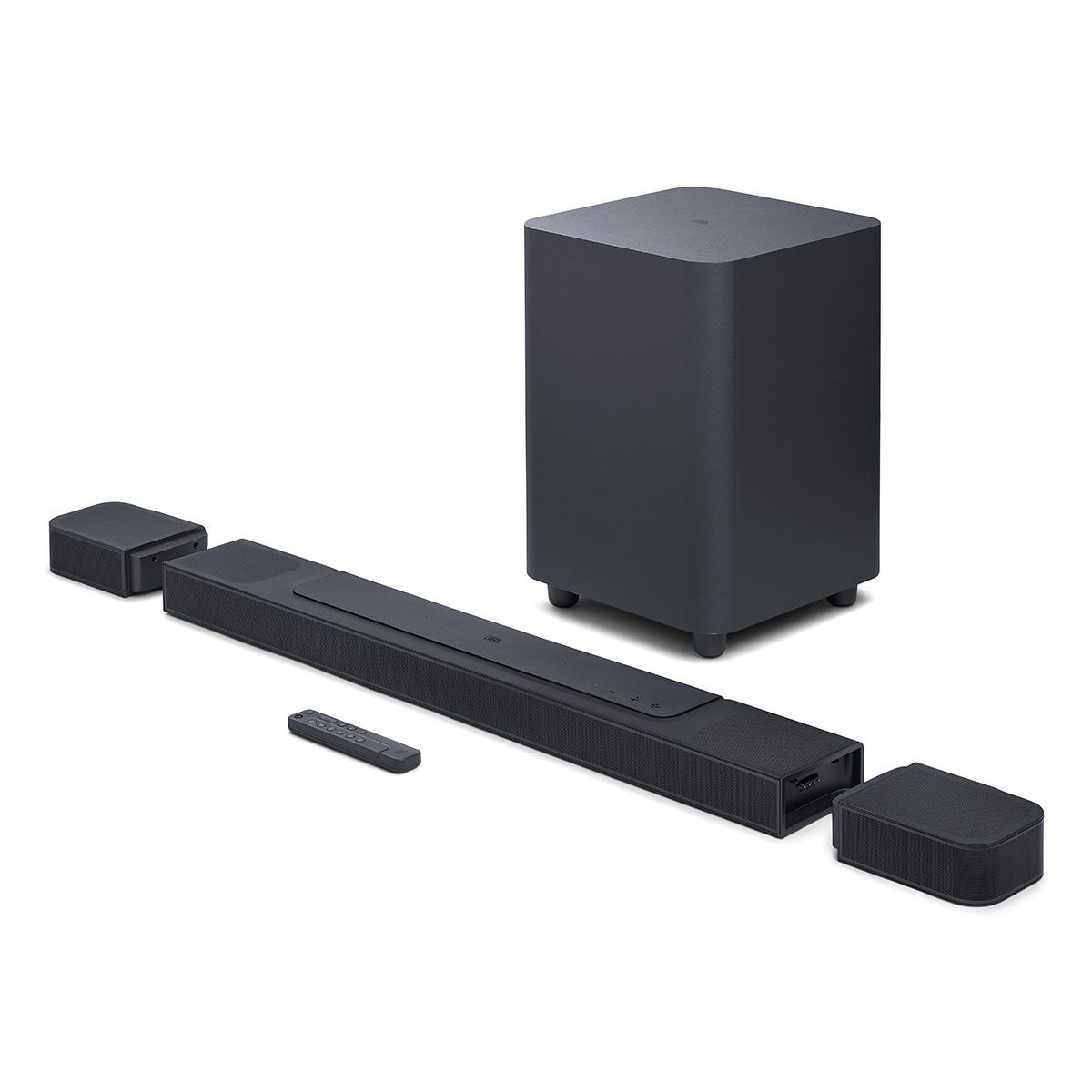
When it comes to upgrading your TV's sound in 2024, two standout options are the $899 Bose Smart Ultra Soundbar and the $1,089 JBL Bar 1000. These premium soundbars represent different approaches to delivering immersive audio, and choosing between them depends largely on your space, budget, and sound preferences.
Modern soundbars have evolved far beyond simple TV speaker replacements. Today's premium models offer sophisticated audio processing, support for 3D sound formats like Dolby Atmos (which adds height channels for more immersive sound), and smart features that were unimaginable just a few years ago.
The Bose Smart Ultra, released in October 2023, represents the latest in single-unit design, while the JBL Bar 1000 takes a more traditional home theater approach with separate components. Both aim to deliver theater-quality sound, but they do so quite differently.
The Bose takes a minimalist approach with its 5.1.2 channel configuration (5 main channels, 1 subwoofer channel, 2 height channels) in a single bar. It uses advanced digital processing and carefully positioned drivers to create virtual surround sound. This approach works particularly well in smaller to medium-sized rooms where physical rear speakers might be impractical.
In contrast, the JBL system provides a full 7.1.4 setup with physical components: the main soundbar, two wireless rear speakers, and a separate subwoofer. The ".4" indicates four upward-firing speakers (two in the bar, two in the rear speakers) for more precise Dolby Atmos effects.
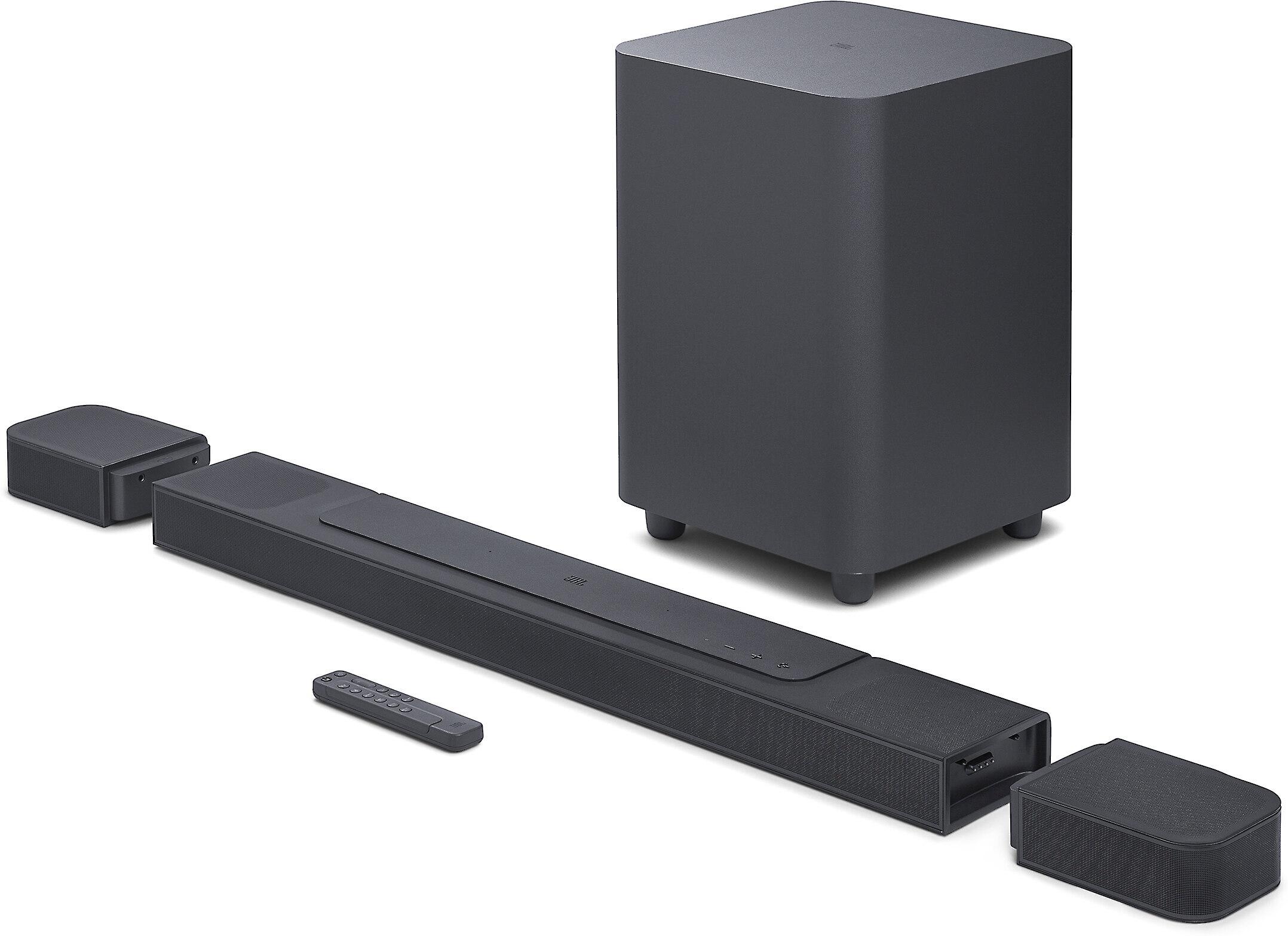
The Bose Smart Ultra excels at creating a convincing sound field from a single unit. Its AI Dialogue Mode, which uses machine learning trained on millions of content samples, makes speech remarkably clear without requiring manual adjustments. During testing, this feature proved especially valuable during quiet dialogue scenes in action movies where background effects often overwhelm speech.
The JBL's physical speaker arrangement provides more precise sound positioning. When watching movies with complex soundtracks, you can actually hear sounds moving behind you, rather than just getting a sense of surround sound. The 10-inch subwoofer delivers notably deeper bass than the Bose's integrated solution, which becomes apparent during explosive movie scenes or music with heavy bass lines.
Both systems handle music well, but with different strengths. The Bose offers excellent stereo imaging from its single unit, with a wide soundstage that works well for most musical genres. Its room calibration system (called ADAPTiQ) helps optimize the sound for your specific space.
The JBL system's separate subwoofer and more powerful amplification (880W total versus the Bose's 300W) provide more dynamic range and impact for music. The ability to detach the rear speakers also allows for interesting placement options during music listening.
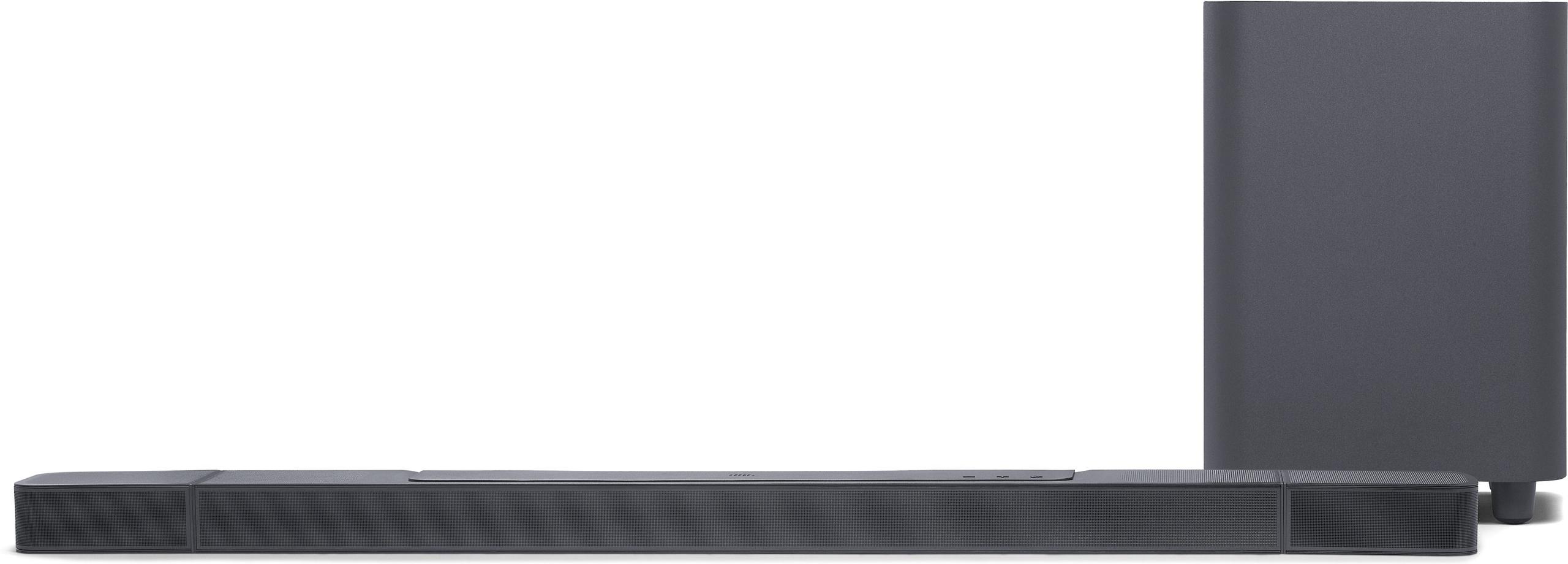
The Bose's single-unit design makes it incredibly simple to set up – just connect the HDMI cable and run the room calibration. Its slim profile (2.25 inches high) works well in most TV setups.
The JBL requires more setup time and space planning for optimal performance. The wireless rear speakers are battery-powered, which provides flexible placement but requires regular recharging (about every 10 hours of use). The subwoofer needs its own power outlet but can be placed anywhere in the room thanks to its wireless connection.
Both soundbars offer comprehensive wireless connectivity, including WiFi, Bluetooth, and support for major streaming platforms. The Bose seems to have a slight edge in smart home integration, with better voice assistant implementation and multi-room audio capabilities. The JBL counters with more robust streaming service integration through its JBL One app.
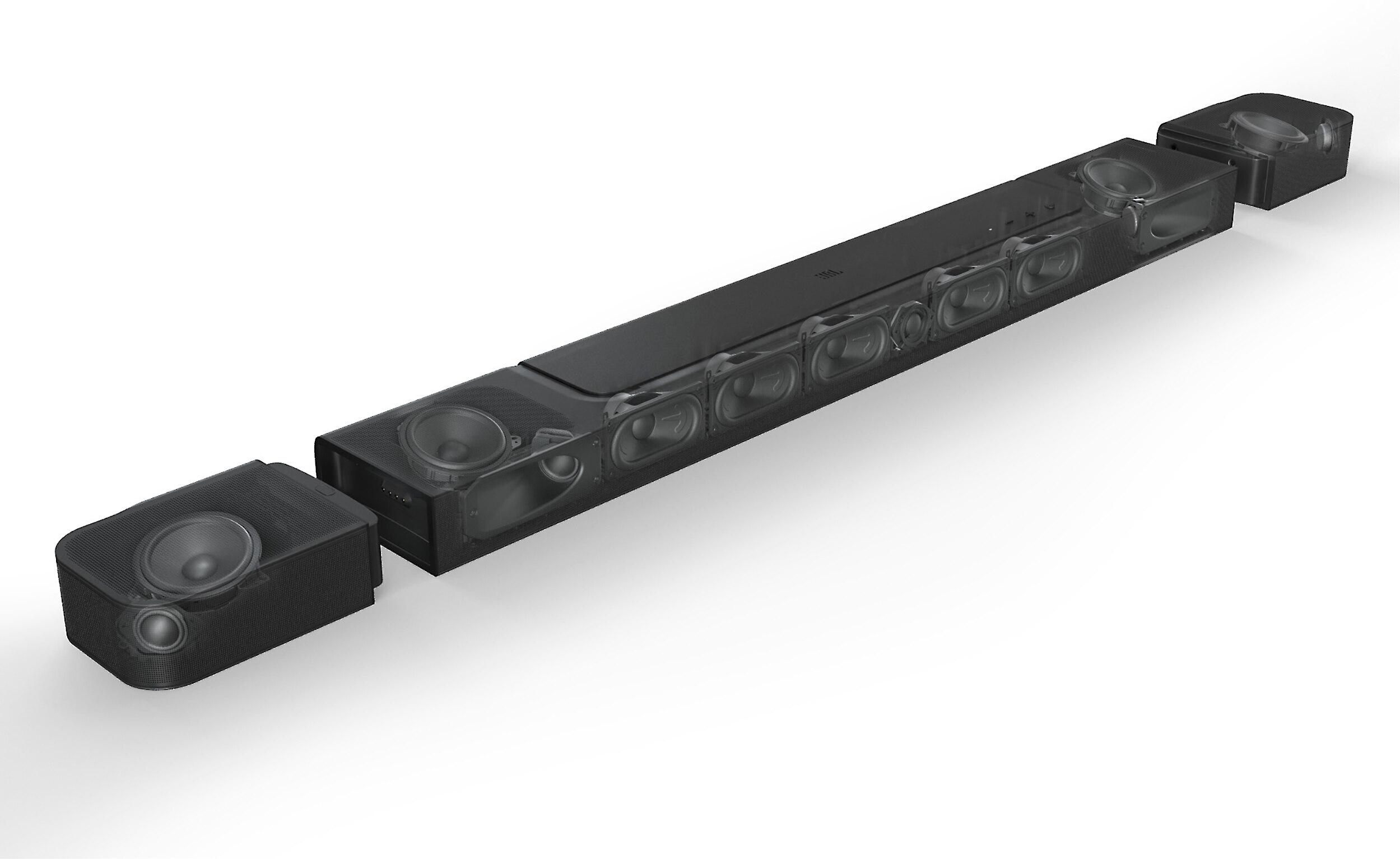
The $899 Bose Smart Ultra represents a premium investment for a single-unit solution. While it can be expanded with additional speakers later, many users find its standalone performance satisfying enough not to require extras.
The $1,089 JBL Bar 1000 costs more upfront but includes everything needed for a complete surround sound system. There's no need to budget for future additions unless you want to expand to a multi-room setup.
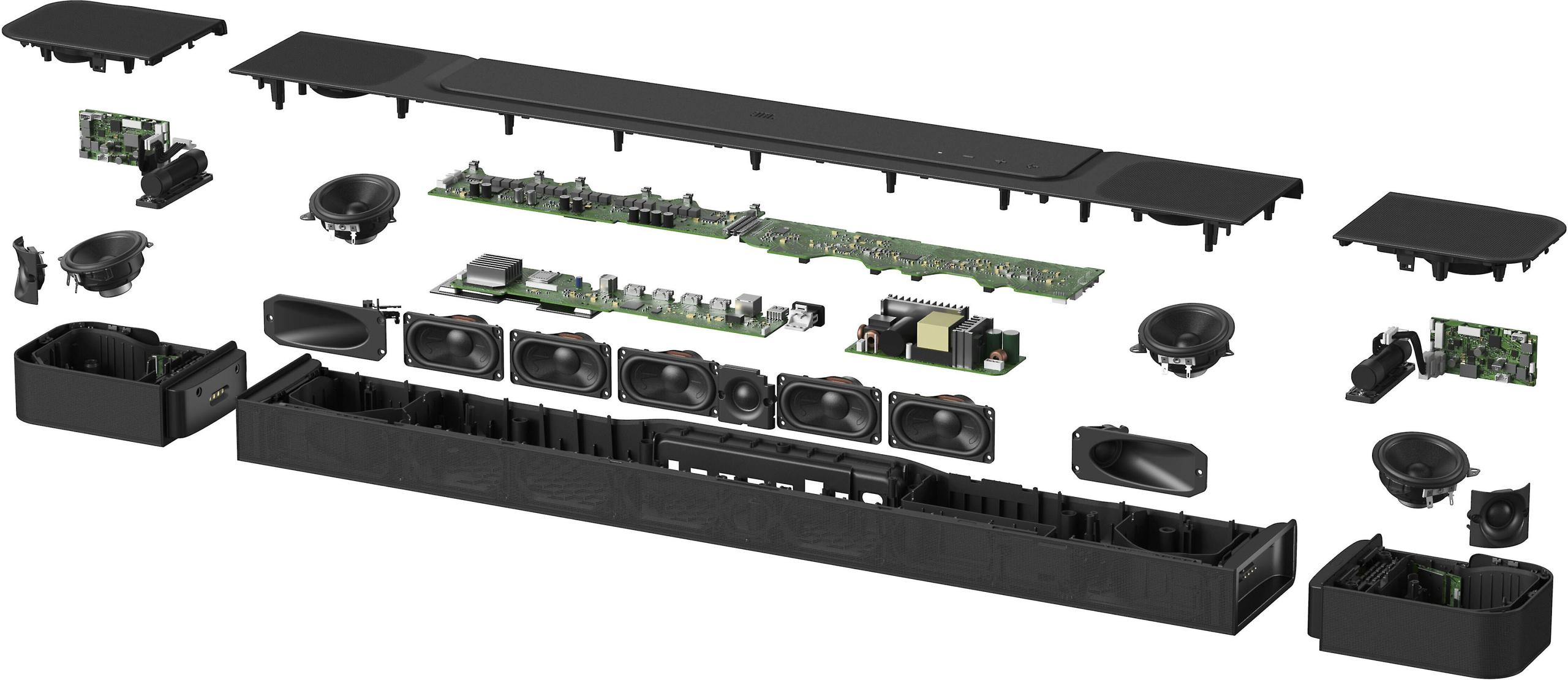
Both systems represent the current state of the art in their respective approaches to home theater sound. The Bose showcases how far virtual surround technology has come, while the JBL demonstrates the benefits of a more traditional component-based system updated with modern wireless technology.
For most users, the decision will come down to room size and setup preferences rather than pure sound quality, as both systems deliver excellent audio. The Bose's single-unit approach works brilliantly in smaller spaces and for those who prioritize simplicity, while the JBL's multi-speaker setup provides a more theater-like experience for those who have the space and desire for maximum immersion.
Remember that both systems will significantly upgrade your TV's sound, and either choice represents a solid investment in your home entertainment system. The key is matching the system to your specific needs and space constraints.
| Bose Smart Ultra Soundbar | JBL Bar 1000 |
|---|---|
| Price - Total system cost consideration | |
| $899 (additional speakers optional) | $1,089 (complete system included) |
| Channel Configuration - Determines surround sound capabilities | |
| 5.1.2 channels in single unit | 7.1.4 channels across multiple speakers |
| Power Output - Impacts maximum volume and dynamic range | |
| 300W total system power | 880W total system power (440W soundbar, 2x70W surrounds, 300W sub) |
| Physical Configuration - Affects room placement and setup | |
| Single soundbar unit (34.5" x 4.5" x 3.5") | Soundbar + 10" subwoofer + 2 detachable rear speakers |
| Dolby Atmos Implementation - Influences 3D sound experience | |
| Virtual Atmos via upward-firing drivers | True Atmos with 4 up-firing drivers (2 in bar, 2 in surrounds) |
| Voice Enhancement - Critical for dialog clarity | |
| AI Dialogue Mode with machine learning | PureVoice Technology with dedicated center channel |
| Room Calibration - Optimizes sound for your space | |
| ADAPTiQ automatic calibration | JBL One app calibration system |
| Smart Features - Enables streaming and control options | |
| Built-in Alexa, Google Assistant, AirPlay 2, Spotify Connect | Alexa, Chromecast, AirPlay 2, built-in WiFi |
| Additional Requirements - Hidden costs and considerations | |
| Optional subwoofer/surrounds available for purchase | Rear speakers need recharging every 10 hours |
| Connectivity - Determines source compatibility | |
| HDMI eARC, Optical, WiFi, Bluetooth | HDMI eARC, Optical, USB (US only), WiFi, Bluetooth |
| Bass Performance - Important for movies and music | |
| Integrated woofers, can add external sub | Included 10" wireless subwoofer |
| Best Use Case - Helps match to your needs | |
| Smaller rooms, clean aesthetic priority | Larger rooms, maximum theater experience |
The $1,089 JBL Bar 1000 provides better movie performance with its true 7.1.4 surround sound setup, physical rear speakers, and dedicated 10" subwoofer. While the $899 Bose Smart Ultra offers good virtual surround, the JBL's physical speaker arrangement creates more immersive movie experiences.
The Bose Smart Ultra is significantly easier to set up since it's a single unit that just needs power and HDMI connection. The JBL Bar 1000 requires positioning multiple speakers and maintaining charged batteries in the rear units.
The Bose Smart Ultra costs $899, while the JBL Bar 1000 is priced at $1,089. However, the JBL includes a subwoofer and rear speakers, which would cost extra with the Bose.
The JBL Bar 1000 delivers superior bass with its dedicated 10" wireless subwoofer. The Bose Smart Ultra has good integrated bass but can't match the depth and impact of the JBL's separate subwoofer.
Yes, both support Dolby Atmos, but the JBL Bar 1000 provides true Atmos with four up-firing speakers, while the Bose Smart Ultra creates virtual Atmos effects from its single unit.
The Bose Smart Ultra is ideal for small rooms due to its single-unit design and virtual surround capabilities. The JBL Bar 1000 requires more space for optimal speaker placement.
Yes, both the Bose Smart Ultra and JBL Bar 1000 offer WiFi, Bluetooth, and support major streaming services like Spotify and Apple AirPlay 2.
Both excel at dialogue clarity. The Bose Smart Ultra uses AI Dialogue Mode, while the JBL Bar 1000 features PureVoice technology. Both systems make voices clear and distinct.
The JBL Bar 1000 includes everything needed for full surround sound. The Bose Smart Ultra works well alone but offers optional subwoofer and surround speakers for purchase.
The JBL Bar 1000 offers better gaming performance with its true surround sound setup and precise audio positioning. The Bose Smart Ultra provides good virtual surround but can't match the JBL's directional accuracy.
Yes, both support voice assistants. The Bose Smart Ultra works with Alexa and Google Assistant, while the JBL Bar 1000 offers similar capabilities through its smart features.
The JBL Bar 1000 offers a more future-proof solution with its complete 7.1.4 setup, while the Bose Smart Ultra provides flexibility to add components later but may require additional investment.
We've done our best to create useful and informative comparisons to help you decide what product to buy. Our research uses advanced automated methods to create this comparison and perfection is not possible - please contact us for corrections or questions. These are the sites we've researched in the creation of this article: techradar.com - bose.com - bestbuy.com - tomsguide.com - pcrichard.com - rtings.com - bose.com - boselatam.com - avsforum.com - bose.com - zdnet.com - jbl.com - jbl.com - pcrichard.com - rtings.com - d21buns5ku92am.cloudfront.net - ro.harmanaudio.com - target.com - harmanaudio.com - dell.com - mm.jbl.com - dolby.com - jbl.com.my - videoandaudiocenter.com